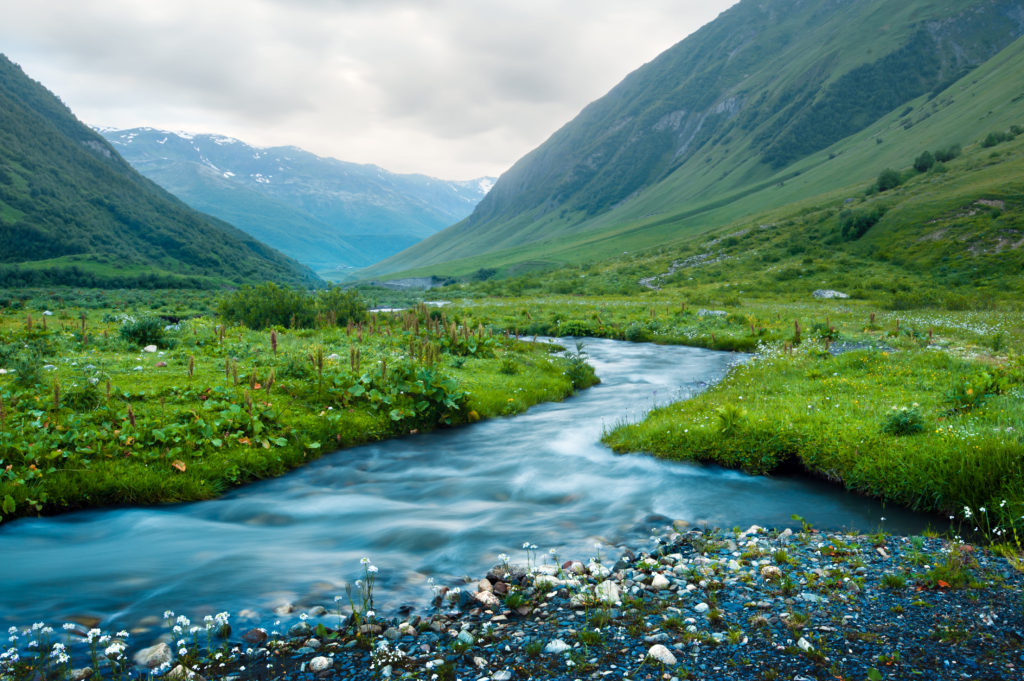Sustainable irrigation: Karez system in Afghanistan
Abdullah Azami1*, Jay Sagin2, 3, Sayed Hashmat Sadat1, Hejratullah Hejran4
1 Kabul University, Kabul, Afghanistan
2 Western Michigan University, Kalamazoo, USA
3 Nazarbayev University, Nur-Sultan, Kazakhstan
4 Kazakh-German University, Almaty, Kazakhstan
*Corresponding author: abdullah.azami123@gmail.com
Jay Sagin: zhanay.sagintayev@nu.edu.kz; Sayed Hashmat Sadat: sadat8208@gmail.com; Hejratullah Hejran: hejratullah73@gmail.com.
https://doi.org/10.29258/CAJWR/2020-R1.v6-2/1-18.engResearch Article

Abstract
In Afghanistan, water is mostly used for agricultural purposes. The water supply chain requires updating to ensure its sustainability. Different irrigation methods – such as surface water based irrigation (via canals), groundwater based irrigation, and the Karez irrigation system – are applied across the country. Considering the compatibility of the Karez system with the environment, it can be deemed the most effective irrigation scheme, as it allows collecting a significant amount of groundwater and conveying it to land surface via sub-horizontal tunnels using gravity. This article analyzes Afghanistan’s Karez irrigation systems currently feeding water to over 170,000 ha of farmland with a potential to expand and become a component of sustainable water supply chain.
Download the articleFor citation: Azami, A., Sagin, J., Sadat, S. H., & Hejran, H. (2020). Sustainable Irrigation: Karez System in Afghanistan. Central Asian Journal of Water Research, 6(2), 1–18. https://doi.org/10.29258/cajwr/2020-r1.v6-2/1-18.eng
References
- Katawazy, A.S., 2013. A Comprehensive study of Afghan saffron. Report of Research, Planning and Policy Directorate, Afghanistan Investment Support Agency. Kabul, Afghanistan;
- Hi̇mat, A., Dogan, S., 2019. Ancient Karez System in Afghanistan: The Perspective of Construction and Maintenance. Akademik Platform Mühendislik ve Fen Bilimleri Dergisi [Academic Platform Mugendism and the Journal of Science Knowledge], 7(3), 347-354. DOI: 10.21541/apjes.466757;
- Asian Development Bank, ADB, 2015. Preparation of the Afghanistan water resource sector development strategy. Vol. 2 annexes. TA 7994 AFG;
- Anderson, I.M., 1993. FAO Program for the Rehabilitation of Afghanistan: Rehabilitation of Informal Irrigation Systems in Afghanistan. Design Manual;
- Broshears, R.E., Akbari, M.A., Chornack, M.P., Mueller, D.K. and Ruddy, B.C., 2005. Inventory of ground-water resources in the Kabul Basin, Afghanistan. U.S. Geological Survey;
- Central Statistic Organization, CSO, 2014. Afghanistan External Trade, Statistic Yearbook, Ansari Walt, Kabul, Afghanistan, pp. 177-200;
- Majeed, A., 2000. Natural and artificial recharge techniques for Baluchistan. IUCN Baluchistan programme, water programme document series. Available at: http://www. waterinfor. net. pk/pdf/nartb. pdf;
- Favre, A. and Kamal, G.M., 2004. Watershed atlas of Afghanistan;
- Klemm, W., 1996. Promotion of Agricultural Rehabilitation and Development Programs in Afghanistan. Water Resources and Irrigation, FAO, Islamabad, November 1996; a report part of the “Afghanistan Agricultural Strategy”, FAO, Rome, 1997;
- Goes, B.J.M., Parajuli, U.N., Haq, M. and Wardlaw, R.B., 2017. Karez (qanat) irrigation in the Helmand River Basin, Afghanistan: a vanishing indigenous legacy. Hydrogeology Journal, 25(2), pp. 269-286.
- Habib, H., 2014. Water related problems in Afghanistan. International Journal of Educational Studies, 1(3), pp. 137-144;
- International Centre for Agricultural Research in the Dry Areas, ICARDA, 2002. Needs assessment on soil and water in Afghanistan. Future Harvest Consortium to rebuild agriculture in Afghanistan. International Center for Agricultural Research in the Dry Areas [online] Available at: https://afghanag.ucdavis.edu/irrigation-natural-resource/files/soil-access-water.pdf [Accessed on April 5, 2020];
- Khamma Press, 2019. Afghanistan’s saffron ranked first in the world for eight consecutive years (last updated December 21, 2019). Available at: https://www.khaama. com/afghanistans-saffron-ranked-first-in-the-world-for-eight-consecutive-year-2019 [Accessed April 1, 2020];
- Khan, M.J., Pacha, G., Shahzad Khattak, M. and Oad, R., 2015. Water distribution of traditional karez irrigation systems in Afghanistan. Irrigation and Drainage, 64(2), pp. 169-179;
- Macpherson, G.L., Johnson, W.C. and Liu, H., 2017. Viability of karezes (ancient water supply systems in Afghanistan) in a changing world. Applied Water Science, 7(4), pp. 1689-1710;
- Ministry of Agriculture Irrigation and Livestock, MAIL, 2002. Afghanistan Natural Resources and Agriculture Sector Comprehensive Needs Assessment (Draft Report), Multi Donor Phase II Mission, Kabul, Afghanistan. Available at: https://think-asia.org /bitstream/handle/11540/6189/pass-Afghanistan%20-%20Natural%20resources% 20%26%20agriculture%20sector%20comprehensive%20needs%20assessment%20-%20Final%20draft%20report%20Jul02.pdf?sequence=1 [Accessed May 20, 2020];
- Ministry of Agriculture Irrigation and Livestock, MAIL, 2015. Afghan saffron on media. Available at: https://www.mail.gov.af/en/afghanistan% E2%80%99s-saffron-media) [Accessed April 9, 2020];
- Mostafaeipour, A., 2010. Historical background, productivity and technical issues of qanats. Water history, 2(1), pp. 61-80;
- Nasiri, F. and Mafakheri, M.S., 2015. Qanat water supply systems: a revisit of sustainability perspectives. Environmental Systems Research, 4(1), pp. 1-5;
- Qazi, A. 2008. Afghanistan Water Resources and Pollution. Afghanistan online. Available at: www.afghan-web.com/environment/water/ [Accessed April 9, 2020];
- Qureshi, A.S., 2002. Water resources management in Afghanistan: The issues and options (Vol. 49), International Water Management Institute;
- Rout, B., 2008. How the water flows: a typology of irrigation systems in Afghanistan. Afghanistan Research and Evaluation Unit Issue Paper 1-58;
- Stevens R. L., Jankowski M., Larsson O., 2005. Multi-Criteria Evaluation of Sedimentation in the Göteborg Archipelago, Göteborg University;
- Tünnermeier, T., Houben, G. and Himmelsbach, T., 2005. Hydrogeology of the Kabul Basin, part I: geology, aquifer characteristics, climate and hydrography. Foreign Office of the Federal Republic of Germany, AA-Gz’GF07, 885(3), p. 16.
Afghanistan, agriculture, irrigation system, karez, sustainable water supply